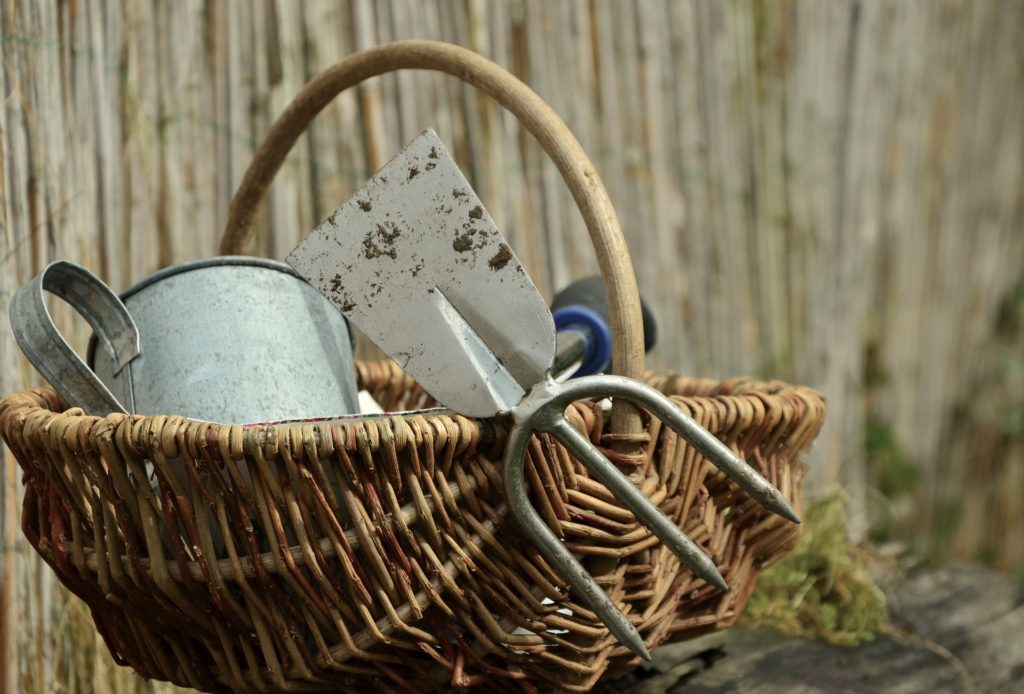
by John Hosford of The Weekend Garden Centre
Self-isolation and longer days with the clocks going forward by an hour last weekend gives us more time to get out and about in the garden. Let’s hope our good weather continues during our lockdown so we can take advantage of the longer days!
JOBS FOR THE MONTH
Keep weeds under control
Keeping a vigilant eye on weeds at this stage of the year will pay dividends later in the year as you won’t give them the opportunity and chance to flower and go to seed. With milder weather, growth accelerates; many weed seeds are wind dispersed and failure to control in time will result in infestations of problematic weeds over several seasons.
Hoe regularly with a sharp Dutch hoe.
Once weeds have been removed by hoeing or hand weeding, it is a good idea to apply a good mulch such as well-composted bark mulch.
Fruit bushes, canes, roses and perennials can be mulched with well-composted farmyard or stable manure.
Ensure your mulch is free of weed roots especially deep rooted weeds such as nettles, docks, briars, bindweed and thistles.
Protect fruit blossom from late frost
April can often be a treacherous month with frosts, which will destroy your fruit blossom and consequent fruit crop. Keep a close eye on the forecast and take adequate and appropriate precautions when frost is forecast.
Tie in climbing and rambling Roses
Give Roses their first Spring feed using a specific Rose fertiliser. Water in well after application if dry weather prevails during application.
Sow hardy annuals, herbs and wild flower seed outdoors
Hardy annuals may be sown in informal drifts. If sowing in island beds – keep the taller growing varieties to the centre with the lower varieties graduated down towards the front of the bed. Do choose a good range of varieties to give you a broad spread of colours and flowering times. Label each group as sowing is completed.
CITRUS
Citrus are not hardy in Ireland but can be grown in pots outdoors in summer and brought indoors for winter. Of all citrus, lemons are the most frequently grown. Kumquats are the most cold tolerant. Limes and grapefruit need more warmth.
The fragrant flowers can appear all year round but are especially abundant in late winter. Fruit ripen up to 12 months later, so they often flower and fruit at the same time.
Citrus can be put outdoors in summer in a sheltered sunny position but only when temperatures increase from early June until late September. Keep fleece at the ready in case of sudden cold nights. Low temperatures will inhibit flowering and may cause damage or even death. A minimum night temperature of 10 C is required for lemons and limes. Calamondin oranges need a minimum winter night temperature of 13 C (55 f). Kumquats are unusual citrus, as the fruitd are eaten whole – including the skin. Plants are naturally very bushy and highly productive. They can tolerate winter temperatures down to 7C (45F) – among the hardiest of all citrus. Centrally-heated rooms are not ideal for citrus.
Feed with a specific Citrus fertiliser. A summer feed is applied when the clocks go forward at the end of March changing to a winter formulation when clocks go back to winter time at the end of October.
FRUIT GARDEN
Keep a vigilant eye on early-flowering fruits, covering overnight with hessian, frost-protection fleece or sacks or old blankets. Uncover in the morning to facilitate pollination.
Ventilate protected strawberries on sunny days and if growth is poor give a liquid feed.
Finish planting new runners by mid-April. Prune gooseberries and red and white currants left unpruned during the winter. Prune pyramid plums in their early years.
Hand pollinate wall trained peach and nectarine flowers using an artist’s brush to facilitate pollination. Then spray at mid-day to help setting in dry weather.
Untie and retrain branches of wall-trained figs that have been bundled together for protection at the end of the month. Prune as necessary.
Raspberry planting should be completed now, cutting back the newly planted canes.
VEGETABLE GARDEN
Seed Potatoes
Once the tubers have been planted in spring, the emerging shoots will need to be ‘earthed up’ to stop the tubers becoming green (and therefore poisonous) and to protect them against frost.
When the plants are about 20cm high, draw soil over them to around 15cm from either side of the row with a draw hoe.
Potatoes need an open site and frost pockets should be avoided especially when growing early varieties.
They will grow well on a wide range of soils but are best on deep, fertile, moisture-retentive soil.
They will benefit from well composted organic material, which preferably should be added in the previous autumn.
Tomato plants
Tomato plants can be planted under protection as the weather and soil starts to warm up. You can grow in large pots,grow-bags or in the glasshouse border.
In line with Government guidelines The Weekend Garden Centre is closed until Easter Sunday, April 12, 2020.
If you have any enquiries, need advice or information contact us on 086-4426450 or 087-6121285, email john@hosfordsgardencentre.ie.
Forward/advance bookings may be made via above for garden spruce-ups and planting services.


